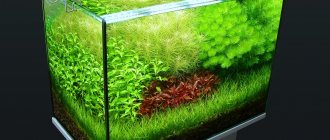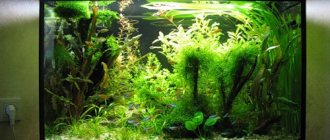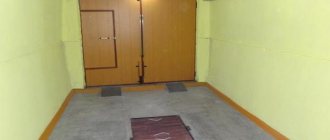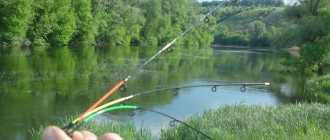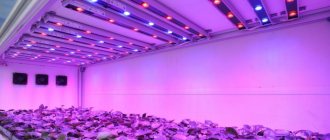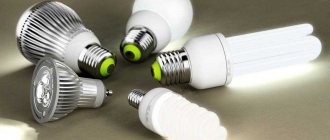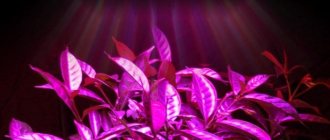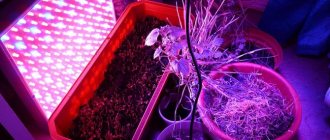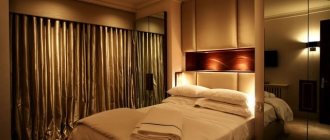Hi all! In this material, we will discuss all the pressing issues related to aquarium lighting. Moreover, we will give useful guidelines, cram it into a pile of links and try as much as possible to help the reader with the choice of lighting for aquarium plants.
This zeal is due to the fact that there are articles on this subject on our website, here they are:
Aquarium lighting and lamp selection;
DIY aquarium lighting;
Light for an aquarium with plants;
But these materials are basic crackers and are also a little outdated.
There are also a lot of materials on this topic on the forum, but you won’t find them... In general, let’s enjoy the aquarium light with all our hearts!
To get started, watch our latest video about aquarium lighting, it will help you understand what we can do for grass, and visualize the picture in general.
Well, now on horses the subsections of the article:
How much light does a planted aquarium need?
And then the leapfrog immediately begins. It would seem that the question is simple, but everyone is screwing up... Let's agree that in this article we will not go into terminology, we will not give deep explanations. All subtleties and explanations can be found on FF or Google. The purpose of the material is to give the correct vector!
Watts, Lumens, Luxes, Kelvins, PAR/PAR, Ra... Oh! How all this confuses newbies, while experienced aquarists are overcome by the thirst to get excited, get excited and get caught up =)
Watts is the power of an electrical appliance. The iron also consumes watts, but does not glow. Hence the conclusion is that Watts do not characterize lighting in any way.
Lumens are how much light a light source emits.
Lux is how much light hits a surface. Here is a visual picture.
In our forum practice, we met weirdos who bought lux meters on Aliexpress and, foaming at the mouth, proved to everyone that this is the very thing that should be used to measure lighting in an aquarium. But let's think logically. The bottom of an aquarium, even the simplest one, is an uneven surface; plants, even in an amateur herbalist, are at different levels, let alone complex hardscapes and aquascapes. And, if we take the fact of refraction and scattering of light in water, then the lux meter can be thrown into the trash.
Lumen is the most stable and constant characteristic. It is best used to “measure lighting”. Lumens are listed on virtually every light source. If they are not there, you can find out their approximate value by typing into a search engine something like: “How many lumens in watts... for fluorescent lamps.”
We secured it and moved on.
Underwater lighting capabilities
Additional lighting for the aquarium, if necessary, is created by underwater lighting. Such lamps are attached to the walls using special suction cups and decorated with aquatic vegetation or stones.
An underwater lamp is a light source of different operating principles, placed in a sealed flask, which helps prevent danger to aquarium fish and other representatives of flora and fauna living in an artificial ecosystem.
The industry produces devices that emit light in the following spectrum tones:
- white;
- red;
- blue;
- green.
They help improve the illumination of the aquarium and enhance its decorative functions in the interior of the room.
Thanks to the use of LEDs and having certain knowledge in electrical engineering, many aquarists equip such devices themselves.
The organization of proper diffuse lighting of the aquarium is of great importance for the normal functioning of a closed ecosystem, affecting the metabolic processes of plants, photosynthesis and, consequently, the saturation of the aquatic environment with oxygen necessary for the life of living organisms.
In addition, skillfully created lighting and illumination allows you to turn an ordinary glass container into an original element of room design, attract the eyes of visitors and watch with interest the life of the inhabitants behind the glass, both in a small and large marine aquarium.
How many lumens should an aquarium light have?
Lm/l is. A 2500Lm lighting source costs over 100L. an aquarium. We get 2500/100=25Lm/l.
In the above-mentioned articles on FanFish, as well as on the Internet, there is a meaning that 50-70 Lm/l is enough for a good herbalist. But is this really so? Alas, this is far from the case.
Firstly , all light sources are different. For example, fluorescent lamps shine in all directions.
Fluorescent Lamp
That is, half of the Lumens, or rather the photons of light, do not get into the aquarium at all, even if reflectors , the Lumens will still not be 100% accurate.
And, on the contrary, LED lighting sources have a directional glow - they shine only downwards. If such a 16 cm source is installed above a 100 liter aquarium (~80 cm wide), it turns out that the light will shine in the center, and there will be darkness on the sides.
Hence the conclusion: when calculating “your individual Lumens”, take into account the qualitative characteristics of the light source.
Secondly , it is necessary to take into account the individual characteristics of the aquarium. First of all, height, secondly, hardscape, thirdly, types and number of plants.
No amount of 50-70 Lm/l will penetrate an aquarium with a water column height of 50 cm. In the videos that we showed above, this is precisely what the emphasis is on. There is a “nuclear light” above our aquarium - 220 Lm/l - this is really TuMach, if not for all the components of our aquarium complex.
Don’t listen to those who taboo certain numbers - this is just a general guideline, don’t listen to those who state that 100+ Lm/l is overexposure. These are all lies. If you want a Bombay herbalist, sit down and analyze the light yourself for your project. Below we will try to help you with this.
Well, and thirdly , let's not forget about the daylight hours in the aquarium, which also determines the choice of the number of Lumens.
Illumination standards for a fluorescent lamp
Organizing lighting for an aquarium with fluorescent lamps involves the use of products marked T8 or T5. They emit light to the sides, up and down, but do not penetrate well into the depth of the container. Reflectors can solve the problem. Fluorescent lamps can be combined with LED backlighting.
Fluorescent lamps must be purchased with T8 or T5 markings
In watts
Lighting for an aquarium, taking into account the power of the devices, on average is calculated as follows:
- lamps of 0.1-0.3 Watt per liter of water are used for aquariums with fish and other aquatic life, where there is no vegetation, and therefore no need for good lighting;
- a light source of 0.2-0.4 watts is useful in a container planted with ground cover plants that tolerate shade well;
- more powerful lamps of 0.4-0.6 Watt are used for aquarium flora that are not characterized by active growth or in case of special restrictions on it;
- the most popular light sources of 0.5-0.8 Watt are used for tanks with a wide variety of inhabitants and vegetation;
- in densely planted containers with active plant growth, lamps with a power of about 1 watt per liter of water are used.
The average watts and lumens should match each other.
Daylight hours in the aquarium
The fish are as bright as a light bulb - we are writing this for those who ask: “Do I need to light the aquarium at night?” As for the herbalist, it is very important to maintain a day and night routine, because... During these periods, completely different, opposite processes occur in plants. Here is a picture, explanations in the articles above.
In addition, for plants it is advisable to use a stepped lighting method, that is, recreating the “dawn-zenith-sunset” effect in the aquarium. Old man Takashi Amano spoke about this three hundred years ago . His quote for memory: “Dawn and moderate light = 6 hours, zenith and nuclear light = 3 hours, sunset and moderate light = 3 hours.” in a day". It is clear that this scheme is variable and even depends on the stage of maturation of the herbalist, but, nevertheless, it is a working topic that bears fruit.
Regarding the aquarium lighting mode, we will also say that after starting the herbalist, the lighting is supplied gradually, i.e. ~3-5 hours a day - in the first week, 5-6 hours. - in the second and so on until the optimum. The numbers are approximate, but we think the meaning is clear - in an unstable, newly started herbalist, you should not provoke an algae outbreak with intense light. Keep a close eye on the Redfield ratio , high-quality water changes, well-coordinated filtration and aeration, gradual addition of light, and you will be happy. With all the ingredients, a herbalist can be “put on his feet” by running in 2 weeks.
Advantages and disadvantages
LED lamps have advantages:
- high performance;
- cost savings;
- low heat transfer;
- long service life;
- variety of luminescence spectrum;
- absence of toxic substances in the composition;
- strength;
- protection from moisture;
- no flicker;
- compliance with natural daylight.
Minuses:
- LED lighting still heats the water, so there is a need for heat removal.
- In terms of price, some aquarium diodes are quite expensive.
How to light an aquarium with plants?
So we got to practical recommendations, otherwise we’re all blah-blah. It is worth saying that light for an aquarium with plants is one of the most expensive components, which, like a CO2 balloon system, not everyone can afford. The price tag for high-quality light can be from 20,000 rubles and this is normal. Google “ADA lamps” RUB 100,000. – not the limit =)
And here’s a life hack for you - ordinary construction/street LED floodlights for a couple of thousand rubles will help you perfectly. If you are a beginner, if you are not willing to spend too much, then floodlights are a panacea. For ~5000r. You can have fun with excellent light over a 100 liter aquarium and even with a stepped lighting method.
You saw the video above where LED spotlights were used. And here is our work from last year - “Lair of the Chimera” . The herbalist is grown on LEDs.
So don’t listen to those who start telling you that PAR/PAR is our everything, that Kelvins rule, but what about Ra?... All these are such secondary signs of lighting that it’s not worth concentrating on them, especially for a beginner. Lumens – lighting intensity – is our for all! Everything else is 10% success. Please look at the picture we painted =)
LED spotlights over the aquarium
Aquarium 100 l. the height of the water column (not to be confused with the height of the aquarium) is 30-40cm. It costs three 30W LED floodlights. What will we get?
We get the following, one 30 Watt spotlight has ~ 2300-2700 Lm, let’s take the average 2500 Lm. We get 2500*3=7500Lm, divide by 100L. = problem-free and real 75 Lm/l.! If you calculate the “dirty volume” of the aquarium, it will be 80+ Lm/l.
In this case, we place the central spotlight on one timer socket, and the two side ones on another timer, and we get a sort of stepped lighting method. We program the timers so that, say, first the center turns on for 2 hours, then turns off, and the sides turn on for 2 hours, then 3 hours. all together - zenith and further downward. Shaitanama!
How to mount LED spotlights? Previously, when they were huge - with a large radiator - this was really problematic. Now the spotlights are so thin that they can even be installed under the lid of an aquarium or even glued to silicone, as we did in our video. If the aquarium is open, the best solution is Joker. Type “Aquarium joker” in Yandex.Images and you will see mounting options.
Also, the spotlights can be simply mounted on metal profiles, and if this is a problem, then take at least a skewer and attach the spotlights to them (with a tie or the same silicone)... =)
We hope that the exhibition was useful to you.
But what if you want something professional? Currently, the aquarium market provides opportunities for every taste and color, in addition, the “craftsmen” can cut the light for you the way you want. Your task is just to decide what your project will be (characteristics of the aquarium, hard, plants), estimate the Lumens, and choose the desired color temperature.
If we talk about branded lamps, then, as an example and without guile, let’s look at the lamps of our partners. We hope this will help you decide and understand the essence.
Let's start with the simplest LED panel from Laguna. Read more about them here .
A simple aluminum panel, a lightweight, ergonomic lamp, it fell into our aquarium a couple of times - the water resistance is good =). The price tag for the older model is ~ 4500 rubles. at 2200Lm. Can be recommended for amateur and simple herbalists. If the aquarium has a couple of unpretentious plants, the aquarium is not tall, the Laguna lamp is quite suitable.
Let's do the math as a guide. Aquarium 54 l. 60*30*30. 2200/54= 40.74 Lm/l. Now let’s estimate that the net volume of water in the aquarium is 10 liters less, the laid soil eats up the water column by 5-7 cm. We can safely say that the Lagunovsky lamp gives ~ 50 Lm/l in the specified aquarium, i.e. you can safely grow vallisneria, hornwort, unpretentious ludwigia, anubias, etc.
As you know, LEDs last much longer than fluorescent lamps, incl. Laguna is quite suitable as a replacement for LL.
Next, consider Tetronic from Tetra. Read more about them here .
Price tag for model 580 ~ 7500 rub. at 1258lm. The price is great. But the cool thing about Tetronikov is that they come with adapters for the “old” T5-T8. That is, you can put Tetronic in the lid instead of a fluorescent lamp and forget for a long time that you need to change the LL.
An undoubted advantage of Tetronikov is also the quality and “fatness” of the radiator. The lamp is so strong that you can use it to chase hooligans around the park or to drip potatoes in the garden =) The thing is indestructible. One piece. Good quality. Eh... if only there were a few more lumens...
So, well, let's look at a couple of goodies that our partner offers us - the Aqua-Logo Wholesale Company. Lamp Aqua Medic Qube 50 plant, more details in the spoiler.
Show/Hide text
The Aqua Medic Qube 50 plant LED chip consists of 24 individual LED elements with a balanced spectrum. The total power of the lamp is 50W, and the luminous flux power is 1364lm. The level of photosynthetically active radiation reaches 1.410 µmol photons m−2s−1. Light color and intensity are manually adjustable via 2 channels.
The luminaire is equipped with a silent internal fan to reliably cool the powerful LED chips. The flexible bracket provides strong fixation and easy installation; the kit also includes a mounting kit for mounting the lamp on the ceiling. A lens with a dispersion angle of 90° is installed.
Lamp dimensions 80 x 80 x 65 mm. Maximum effective lighting area up to 500 x 500 mm
Additionally, you can purchase the Aqua Medic Qube control, it will allow you to independently program channels with the ability to adjust the light intensity, for example, for white and colored LEDs (sunrise/sunset and moonlight). Using a cable (included with the controller), you can connect several Qubes to each other and control them simultaneously.
In stores you will find these products under the following names:
— Controller for LED lamps Qube 50, 2-channel (Art. AM-83216000)
— LED Qube 50 Plant lamp, 2 reg. channel, 80x80x65mm, 50W, 1364lm (Art. AM-83217050)
Below we have posted a video from the official Aqua Medic channel about this lamp.
Lamp Aqua Medic Qube 50 plant
Price tag 21000 rub. at 1364 Lumens, what's the fun?! The Aqua Medic Qube 50 plant lamp is a professional item for breaking through any aquarium cube. Here you have headlights, dimming, and playing with Kelvins. Serious quality! But the price tag is already for gourmets and experts in their craft. If you are a professional nano-aquarium, vabikusa... Aqua Medic Qube 50 plant is a dream!
Some of the readers may ask: “Wait, wait, boss. What about the lighting intensity, Lumens? How does Medic Qube 50 plant at 1364lm break through a can?” Friends, it's simple. There is a LENS on the lamp that amplifies the light. A lens is like a magnifying glass; it is usually placed on LEDs in cases where the lamp is mounted or suspended. Due to the lens, the distance between the light source and the waterline is leveled.
And finally, the East panels. More details in the spoiler.
Show/Hide text
ISTA Professional Plants LED Light ensures healthy growth of green and red foliage plants equally well.
The light contains the spectrum that plants need for growth and photosynthesis. It triggers the active process of photosynthesis, as it has a peak in the red sector of the spectrum with a wavelength of 660 nm. Enhances the production of anthocyanidin and chlorophyll in plants.
ISTA Professional Plants LED Light does not distort the natural colors of plants. The color rendering index of these lamps is Ra95, and the color temperature is 7000K, which is very close to natural sunlight. Thanks to its special design, it provides uniform illumination at an angle of 150 degrees.
The body is made of anodized aluminum and has a radiator, with which the lamp is cooled, thereby increasing its service life.
The ISTA Professional Plants LED Light luminaire line consists of the following models:
— Professional LED lamp for plants, 45cm, 23.8W, 2478 lumens (Art. IL-400)
— Professional LED lamp for plants, 60cm, 35.7W, 3717 lumens (Art. IL-401)
— Professional LED lamp for plants, 90cm, 53.2W, 4956 lumens (Art. IL-402)
— Professional LED lamp for plants, 120cm, 79.8W, 7434 lumens (Art. IL-403)
— Professional LED lamp for plants, 150cm, 93.1W, 8673 lumens (Art. IL-404)
Included with the lamp you will find legs for attaching the lamp to the side walls of the aquarium.
Separately, you can purchase special lamp holders that allow you to hang the lamp higher, freeing up space underneath for caring for the aquarium. It can also be used if necessary to distribute light over a large surface area of water. Installed on the side walls of an aquarium made of glass up to 12mm thick. Height above the aquarium 35cm. Hanging cables are not included.
The range includes the following holder models:
— Holder for pendant lamp for aquarium 60 cm (Art. IL-407-42)
— Holder for pendant lamp for aquarium 90 cm (Art. IL-407-43)
— Holder for pendant lamp for aquarium 120 cm (Art. IL-407-44)
— Cable for hanging the lamp on a holder (2 pcs) (Art. EL-766-2)
Below we attach a video from the official ISTATaiwan channel, which shows the development process of a planted aquarium in which this lamp is used.
The ISTA company is Taiwan, which professionally produces products for aquascaping and breathes in the back of the ADA company, and sniffs in the ear very seriously, since Ista’s pricing is an order of magnitude lower than that of ADA.
Professional LED lamp for plants, 60 cm, 35.7 W, 3717 lumens costs 10 thousand. Taking into account the above, you can calculate for yourself what the profit of the lamp is. Add to this the opulative Ra equal to 95. And also inflated Kelvin = 7000K. Remarque, in terms of the Kelvins, the logic of Ista’s employees is interesting. The recommended color temperature for herbalists ranges from 5500 to 8000K. The ADA lamp is 8000K, most aquarists have 6500K (the same spotlights). Ista took the path of uniqueness, like not yours, not ours, and gave out 7000K =) Well done!
More about Ista lighting.
Consequences of improper lighting
The natural alternation of light and dark times of the day allows plants to develop. Incorrectly calculated lighting power or duration for an aquarium can lead to serious consequences. The difficulty is that aquarium plants need bright light for photosynthesis, but fish do not need this, since they are accustomed to living in the shady thickets of a reservoir. Too much prolonged and bright lighting affects their color.
Problems with incorrect lighting intensity often arise in containers whose height exceeds 40 cm. In them, plants creeping along the bottom of the “jar” experience a lack of lighting. To solve this problem, increase the power of lamps and the duration of artificial illumination. The consequences of this wrong decision can be the appearance of various diseases in fish and water blooms.
Intensity calculation
There are various methods for calculating light intensity for aquariums. The main ones:
- selection by volume;
- selection by depth.
Selection by volume
Selecting lighting according to the volume of the aquarium is quite simple. We must assume that 1 liter of water requires 0.5 W of power. And then, using simple mathematical operations, you can calculate the required power of lighting devices for your aquarium and no calculator is needed.
| Aquarium volume, l | Lamp power, W | Number of lamps |
| 25 | 8 | 1 |
| 50 | 15 | 1 |
| 60 | 15 | 1 |
| 130 | 18 | 2 |
| 220 | 30 | 4 |
| 310 | 38 | 4 |
| 350 | 36 | 4 |
| 400 | 36 | 4 |
| 500 | 58 | 4 |
Streams of light as they pass through the water lose their strength; accordingly, at the depth of the aquarium, the illumination is much less than in its upper layers. To calculate by depth, it is necessary to divide the height of the water column by every 10 cm. For every 10 cm, the illumination is halved. We need to know what kind of bottom illumination we want to get in the end. And based on this, calculate the required power.
Selection by depth:
Ep = Unit / (Ko * Kv), where Unit is the illumination on the lower surface of the aquarium, Lx; Ko – light attenuation coefficient (depending on the height of the aquarium); Kv – coefficient of light attenuation due to water. Equal to 0.83.
Light attenuation coefficient depending on depth:
- 0.3 m – 0.47-0.65;
- 0.4 m – 0.37-0.55;
- 0.5 m – 0.29-0.48;
- 0.6 m – 0.22-0.40;
- 0.7 m – 0.17-0.35;
- 0.8 m – 0.14-0.30.
Result of improper lighting
If the calculation and selection of lighting for the aquarium is incorrect, the results can be disappointing. If there is insufficient lighting, the growth rate of plants will slow down or stop altogether, and light-loving plants may even die.
A yellow coating may appear on the walls of the aquarium, this is a sign of diatoms. If there is too much light, aquarium plants may fold their leaves and an outbreak of green algae may occur. This all significantly worsens the appearance of the aquarium. It is sometimes very difficult to get rid of such consequences as algae! Therefore, it is very important to initially choose the right lighting and fertilizers.
Content
- 1 Why does an aquarium need special lighting?
- 2 Lighting for plants
- 3 Types of lamps 3.1 LED lighting
- 3.2 Fluorescent lamps
- 3.3 Metal halide lamps
- 3.4 Incandescent lamps
- 3.5 Mercury vapor lamps
- 4.1 Plant lamps
- 5.1 Freshwater aquarium without plants
- 6.1 Non-adjustable lighting
LED luminaire MaxSpect R420r
Types of lamps
There are two types of lamps - closed and open. They differ in their design, since in the first version the lighting fixture is attached to the lid and is made as one element. Open type – the lamp is mounted above the water.
As a rule, closed lamps are made of plastic, and LEDs are used as a lighting element. The main thing is that they effectively illuminate every centimeter of the aquarium.
An open lamp has many advantages:
- It dissipates heat perfectly;
- Creates a natural lighting effect, highlighting fish and plants.
Typically, halogen lamps are used in such designs.
